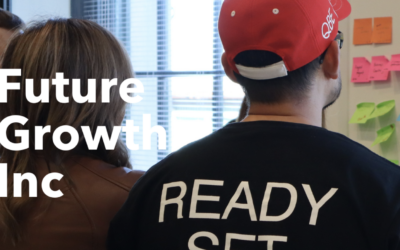So you’ve heard of the ‘entrepreneurs’, but what about ‘intrapreneurs’? The term ‘intrapreneur’ was first coined in the 1980s when author Gifford Pinchot defined it in his book Intrapreneuring: Why You Don’t Have to Leave the Corporation to Become an Entrepreneur, as ‘dreamers who do. Those who take a hands-on responsibility for creating innovation of any kind within a business.’
Here’s six things that are used and loved all around the world, all developed by those said dreamers:
The Post-It Note (1968/1974)

The Post-It was created by Spencer Silver and Alfred Fry over a 6 year period, whilst they were both employed by manufacturing company 3M. The adhesive glue that holds together Post-It notes was actually developed by Silver as a mistake. But 6 years later, Fry used the glue to create a Post-It note.
3M was initially skeptical about its profitability, but launched the product to the world in 1980. It’s now sold in over 100 countries!
Kodak Digital Camera (1975)

It made photography accessible to the world of people who weren’t professional photographers. The first digital camera was developed by Steven Sasson, who was employed as an engineer by Kodak, who at the time had a monopoly on the photography industry.
Kodak (now bankrupt) initially dismissed the design and refused to sell the digital camera until it was too late, while other companies purchased Sasson’s design to take it to market until 1991. Oops.
The Sony Playstation (1994)

Ken Kutaragi (‘The Father of the Playstation’) was almost fired from Sony for secretly working with the Nintendo team to develop the SPC-700 processor chip, whilst still employed by Sony. When the joint venture was over, Sony directed Kutaragi to develop their own console to compete with the latest Nintendo console.
The first Sony Playstation was released in 1994 and was the first video console to sell over 100 million units. Ka Ching.
Gmail (2004)
For most of us, web-based email is how we stay connected and communicate, especially in a work context. And in this world Gmail is a market leader.
Gmail was developed by Google developer Paul Buchheit, who had previously worked on the idea of web-based email before the launch of Hotmail as a personal project as a college student.
During his work on this project at Google, the existing email providers (Yahoo! And Hotmail) had slow interfaces and were written in plain HTML. Buchheit tried to remedy this by using JavaScript code to work around the limitations of HTML. Initially the Gmail software was only used internally for years as the email system for Google employees, before it was released to the public in 2004.
Kodak Inkjet printer divider (2006)

She found that consumers weren’t happy with the cost of ink, quality of prints and the difficulty of using the technology.
Using the respected brand image of Kodak, to develop ink cartridges that were 50% cheaper than the company’s competitors, launching Kodak into the digital industry, which it had previously struggled to engage with.
The Facebook Like Button (2007)

But what was previously named the ‘awesomeness button’ was originally prototyped in one of Facebook’s 2007 hackathons by Justin Rosenstein. Now that’s a real reason why to host and participate in a hackathon, you never know whether you idea is just one of those ones that will be used and liked by millions all over the world.




